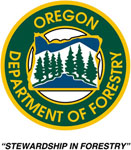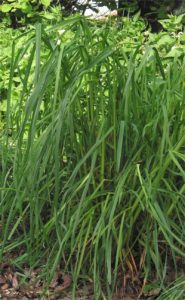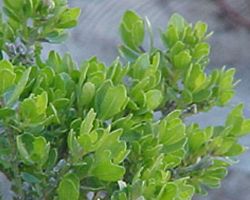
 Oregon Department of Forestry will execute a controlled natural habitat burn starting at 10 a.m. today at the top of Cascade Head. Lincoln City residents may see smoke today and possibly tomorrow.
Oregon Department of Forestry will execute a controlled natural habitat burn starting at 10 a.m. today at the top of Cascade Head. Lincoln City residents may see smoke today and possibly tomorrow.
The Nature Conservatory has been plagued by two invasive species of plant life: Orchardgrass and Coyote Brush.
Orchardgrass
 Dactylis glomerata, also known as cock’s-foot, orchard grass, or cat grass (due to its popularity for use with domestic cats) is a common species of grass in the genus Dactylis. It is a cool-season perennial C3 bunchgrass native throughout most of Europe, temperate Asia, and northern Africa.
Dactylis glomerata, also known as cock’s-foot, orchard grass, or cat grass (due to its popularity for use with domestic cats) is a common species of grass in the genus Dactylis. It is a cool-season perennial C3 bunchgrass native throughout most of Europe, temperate Asia, and northern Africa.
Cock’s-foot is widely used as a hay grass and for pastures because of its high yields and sugar content, which makes it sweeter than most other temperate grasses. In dry areas as in much of Australia, Mediterranean subspecies such as subsp. hispanica are preferred for their greater drought tolerance.
In some areas to which it has been introduced, cock’s-foot has become an invasive weed, notably some areas of the eastern United States.
As with other grasses, the pollen can cause allergic rhinitis (hay fever) in some people.
The grass is popularly grown to satisfy the craving of domestic cats to chew grass, hence its colloquial name cat grass.
The seeds were first collected by Rogers Parker in Hertfordshire; this was then developed by the agricultural reformer Coke of Norfolk. Parker’s estate, Munden, near Bricket Wood, was inherited by the botanist George Hibbert.
Coyote Brush
 Baccharis pilularis, called coyote brush (or bush), chaparral broom, and bush baccharis, is a shrub in the daisy family native to California, Oregon, Washington, and Baja California. There are reports of isolated populations in New Mexico, most likely introduced.
Baccharis pilularis, called coyote brush (or bush), chaparral broom, and bush baccharis, is a shrub in the daisy family native to California, Oregon, Washington, and Baja California. There are reports of isolated populations in New Mexico, most likely introduced.
The plants are found in a variety of habitats, from coastal bluffs, oak woodlands, and grasslands, including on hillsides and in canyons, below 2,000 feet (610 m).
Coyote brush is known as a secondary pioneer plant in communities such as coastal sage scrub and chaparral. It does not regenerate under a closed shrub canopy because seedling growth is poor in the shade. Coast live oak, California bay, Rhus integrifolia, and other shade producing species replace coastal sage scrub and other coyote bush-dominated areas, particularly when there hasn’t been a wildfire or heavy grazing.
In California grasslands, it comes in late and invades and increases in the absence of fire or grazing. Coyote bush invasion of grasslands is important because it helps the establishment of other coastal sage species.








